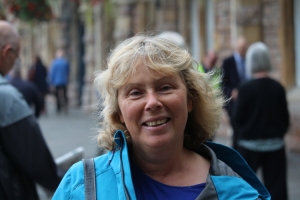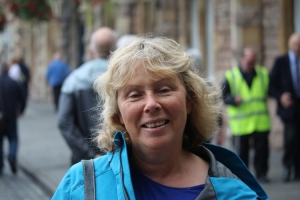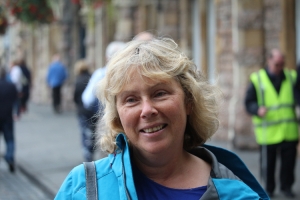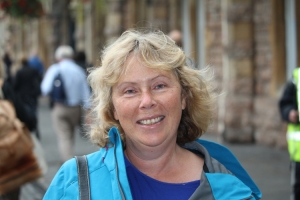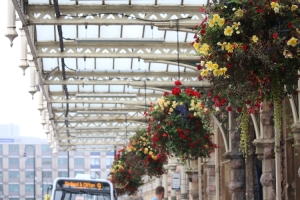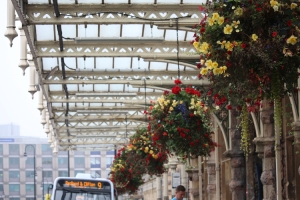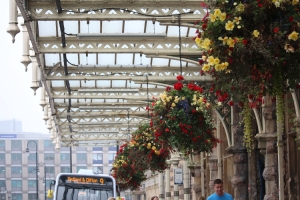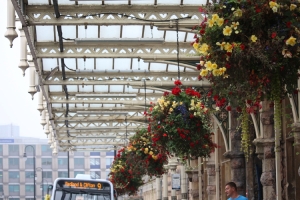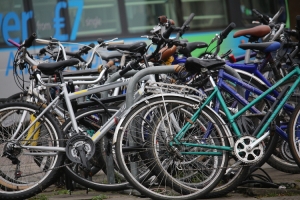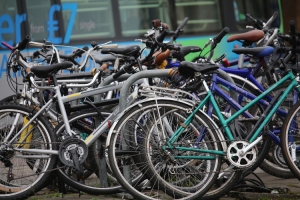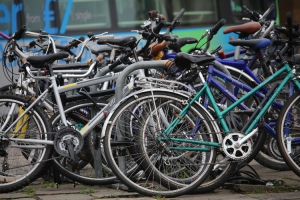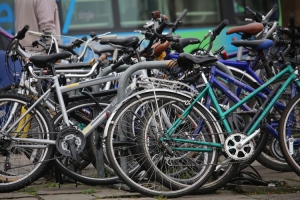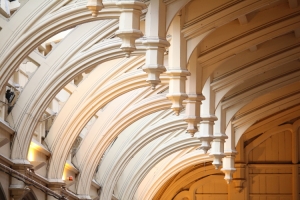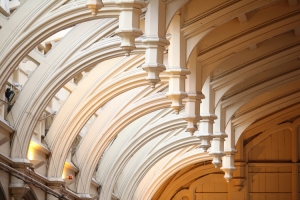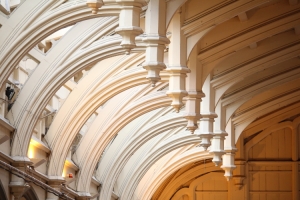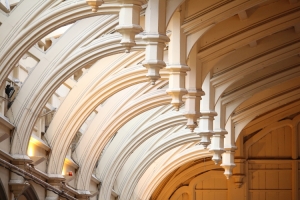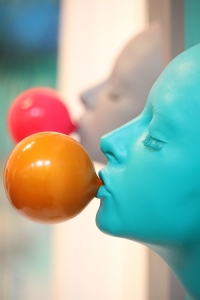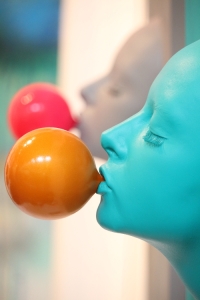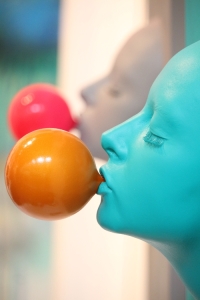The exercise
The purpose of the exercise was to take three or four exposures of the same scene without deliberately changing the camera or framing. The camera was set on full automatic mode. This then provides an opportunity to see how the world does in fact change – and that the camera is sensitive enough to detect it – even though there is no intention on the part of the photographer to record anything differently from one shot to the next. To undertake this exercise I went to the Affordable Art Fair in Bristol (http://affordableartfair.com/bristol/) with my lovely sister, Claire and shot several different sequences shown below.
Sequence 1 – Claire
Camera settings – all the shots were taken at 1/100 sec. The aperture was f5 for the first three shots then altered automatically by the camera to f4.5 for the last one. The ISO setting was 320 for shots 1, 2 and 4 and for some reason reset briefly to 400 for the third shot. The flash was automatically activated for the last shot with the result that Claire’s face is more evenly lit.
Subject – Claire’s expression has altered in the space of the few seconds over which the pictures were made. She blinks, looks away, and then looks directly at the camera again.
Background – other people, unknown to us, pass by all around. Some appear in different positions in several shots, most prominently a man in a high visibility jacket who is just coming into view in the first shot and just leaving in the last.
Sequence 2 – Temple Meads approach
I wanted to capture something about the venue of the event. It was at the passenger shed at Bristol Temple Meads station, where you can see a nice mix of old and new architecture.
Camera settings – The first picture was at aperture f5, 1/100 sec, ISO 320. For the next three the camera switched to aperture f4.5 and ISO 250. This doesn’t seem to have made a great deal of difference to the end results in terms of lighting although the first one is perhaps a little brighter.
Subject – This is pretty much the same for all of the pictures, with the main points attracting attention being the flowers, the wrought iron and glass roof (designed by Isambard Kingdom Brunel), the modern office block and the number 9 bus (which was stationary at a bus stop). The main dynamic change is the appearance of the head and shoulders of a man with a blue T-shirt in the bottom right.
Sequence 3 – bicycles
I thought this heap of locked up bicycles in front of the bus stop at the station was interesting. I sometimes cycle to the station to get a train for my work, and trying to find space to lock a bike here can be tricky.
Camera settings – Nothing changed at all. All shots were at f5.6, 1/250 sec, ISO 400.
Framing – the framing changes slightly. This becomes most obvious when you look at the front wheel of the closest bike on the right hand side.
Background – a headless person appears in the final shot, about to get on the bus.
Sequence 4 – inside Brunel’s passenger shed
The art fair took place in the passenger shed which is in itself something of a work of art. I took these shots of the inside of the roof.
Camera settings – nothing changed. All shots were at f5.6, 1/125 sec, ISO 800.
Framing – at first glance they look the same. But on closer inspection you can see that the camera has been pointing up to take the images, and has dropped a little in each subsequent shot. The easiest point of reference to see this is the horizontal line of the wall pannelling in the bottom right, which seems to get a little further from the edge in each picture, I think this simply reminds me that I was using a camera with quite a heavy lens!
Sequence 5 – Schoony’s art
This last sequence is of the artwork by the London-based artist Schoony, which was exhibited at the Affordable Art Fair by the Bristol-based See No Evil gallery (http://www.seenoevilgallery.com/).
Camera settings – nothing changed. All shots were at f5, 1/100 sec, ISO 1600.
Framing – there are subtle differences which you can see by close comparison of the shots. As with the previous sequence I think this is a result of my having allowed the camera to drop a tiny bit because of its weight. So you get a little bit more neck with each shot. The neck was actually a rather lovely part of the work (I’m not sure these shots do it justice) so I think this means that in my subjective judgement the photos get a bit better from beginning to end.
Reflections on the assignment
An interesting exercise from which I draw the following conclusions
– if you set the camera on fully automatic mode, it may change its settings for reasons you cannot perceive, sometimes leading to results that are more pleasing (but not always).
– small differences to framing can make a relatively big difference to the overall impression of a shot. Little things creeping in at the edge can add interest, especially if viewed as a sequence telling an almost separate story. But depending on the shot they can also distract.
– I have a tendency to allow my camera to drop as I take photos in sequence. So if I want to keep the framing more consistent I should more consciously adopt a firmer hold, or use a tripod.

